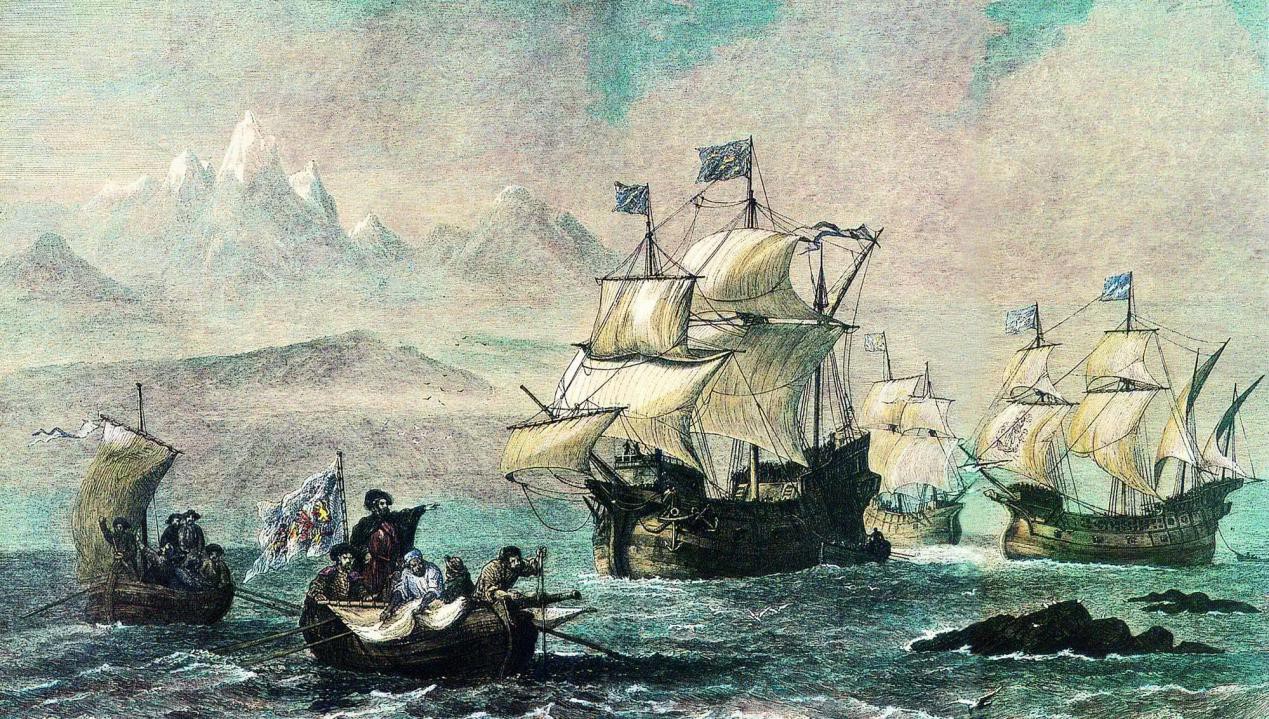Episode 6: Columbus to India (II)
February 27, 2025
In our last episode, we talked about how, after much lobbying effort, Columbus finally convinced the Spanish monarchs to sponsor his plan to sail west in search of Asia.
一
In 1492, Columbus signed the “Capitulations of Santa Fe” with the Spanish Monarchs, in which King Ferdinand and Queen Isabelle agreed that, should he succeed, Columbus would be granted the Title of Admiral of the Ocean Sea and appointed as viceroy and governor-general of all the lands he discovered and claimed for Spain.
For any governing position of the new land, he would have the right to nominate three candidates and request that one of them be appointed. He would also be entitled to 10% of the total income generated from the new land—forever. In addition, he would also have the right to purchase and own 1/8 of the shares in any business ventures established there.
Imagine who would be the most powerful and wealthy person in the world if Columbus was still alive today and the agreement was still valid? Every year, just the 10% of the income from America, including that of the U.S, would made him insanely rich.
Whether the new land was a peaceful paradise or a barren wilderness was not their concern. All they wanted to do was to rush over and loot as much as wealth they could. If they could rob two diamonds, they would return with just one.
On the night of Aug 3rd, 1492, carrying letters from King Ferdinand to The Emperor of China and the Monarch of India, Columbus’s fleet departed from the port of Palos in Spain. His fleet consisted of 3 ships and 90 crew members. The flagship was a large carrack, the Santa Maria. The two smaller ones were caravels —the Pinta and the Santa Clara.
Compared to Zheng He’s fleet, Columbus’s small fleet could only be described as shabby. However, we all know today that Columbus’s voyage far exceeded Zheng He’s seven voyages in historical significance, as Columbus had, in the end, discovered a new continent.
Interestingly, Columbus kept two travel logs to record the nautical mileage travelled each day—one true and one false. The mileage recorded in the false log was less than in the real one, intended to deceive his crew members.
Ironically, upon study and verification by later generations, many calculation errors were found in his real record, while the false numbers he made up to fool his crew turned out to be much closer to reality.
What happened to Columbus throughout his whole life can be well summarized by an old Chinese idiom “flowers carefully planted failed to blossom while willow branches unintentionally inserted into the ground grew into lines of trees.” He tried to lobby the maritime superpower Portugal for a few nice ships, only to receive a meager amount of funding from Spain. He fabricated false records to deceive others, yet they turned out to be quite accurate. Strangest of all, he set out for Asia but ended up in America, accidentally becoming a historical celebrity.
Finally, on the morning of Friday Oct 12, 1492, a sailor named Juan (Juan Rodríguez Bermejo) aboard the Pinta was the first to spot land. The ship’s captain, Martín Pinzón, soon verified the sighting and alerted Columbus. Columbus was thrilled and likely patted Juan vigorously on the back for a job well done. Juan was also very excited about the reward he would receive upon returning to Spain.

But Columbus later did something highly indecent. After returning to Spain, he asserted to the King and Queen that he was the first to see a firelight from the land when he couldn’t sleep and got up to relieve himself that night. With that claim, he took the reward that had been promised to the first person who discovered new land.
Very indecent indeed, but when reading books, we must learn to look beyond the surface of the story. This incident at least revealed one thing: Columbus received so little economic benefit from the Spanish monarchs that he had to alter facts just to embezzle a small reward for discovering new land.
Columbus and many Caucasians who arrived in America later shared one common hobby: naming things. Columbus first named the meeting location San Salvador. He then looked at the natives, who were covered in tattoos, and made one of the most notable mistakes in the human history…
“Hi, you must be Indians. Don’t fool me, I’m a very knowledgeable man.”
Of course, no one contradicted him, as none of them understood what he was saying. From that moment on, the locals of this continent had a name: Indios—the Spanish word for “people from India”.
After the meeting, Columbus continued sailing south and west, ambitiously exploring numerous islands.
After wandering around for a while, he made his second speech: “These must be the peripheral islands outside of Japan, and that large island to the south must be Japan itself,” he then began naming the islands in Spanish—China Southern Island, India Exterior Island, and so on.
Regardless of how beautiful his speech was, in the end he never found Japan, India or China. There was no piles of gold and silver, nor were there beautiful Chinese buildings with dragon statues on the rooftop.
Due to various reasons, in March 1493, six months after landing on the new land, he took some kidnapped Indians along with some gold ornaments and began his journey back to Spain.
The European nobles really had no way of telling whether his claim was true or not.
Then you may ask, when did Columbus’s “India” become today’s America? Or, to put it another way, when did Europe realize this was a brand-new continent?
Let’s continue discussing this question in the next episode.
